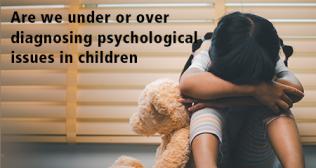
Bulimia Nervosa: Understanding the Cycle of Bingeing and Purging
Bulimia nervosa is a complex and potentially life-threatening eating disorder that affects individuals across gender, age, and background. Often misunderstood or minimized due to its hidden nature, bulimia is characterized by a dangerous cycle of binge eating followed by compensatory behaviors such as vomiting, excessive exercise, or fasting. This repeated cycle can have severe consequences on a person's physical health, emotional stability, and overall quality of life.
Let’s examine: what bulimia nervosa is, examine the causes, symptoms, and effects of the disorder, and shed light on effective treatments. The goal is to spread awareness and encourage early intervention through education and empathy.
What Is Bulimia Nervosa?
Bulimia nervosa, commonly known as bulimia, is an eating disorder that involves episodes of binge eating; consuming unusually large amounts of food in a short period; followed by efforts to avoid weight gain through purging or other unhealthy behaviors. The act of purging can take several forms, including self-induced vomiting, misuse of laxatives or diuretics, fasting, or excessive exercise.
While the behaviors associated with bulimia may appear to center around food, the disorder is deeply rooted in emotional and psychological distress. People with bulimia often struggle with low self-esteem, body image issues, anxiety, or depression.
What Is Bulimia vs. Bulimia Nervosa?
The terms "bulimia" and "bulimia nervosa" are often used interchangeably, though clinically, bulimia nervosa refers to the diagnosable eating disorder as outlined in the DSM-5 (Diagnostic and Statistical Manual of Mental Disorders). Bulimia on its own is a more informal or abbreviated term. Both refer to the same condition characterized by the binge-purge cycle, but using the complete term emphasizes its medical seriousness.
Bulimia Nervosa Symptoms
Recognizing bulimia nervosa symptoms can be challenging, especially since individuals affected by it often go to great lengths to hide their behavior. Unlike some other eating disorders, people with bulimia may maintain a normal weight, which can make the disorder harder to detect.
Common signs and symptoms include:
- Frequent episodes of binge eating, often in secrecy
- Compensatory behaviors like vomiting, laxative use, or over-exercising
- Swelling of the cheeks or jaw area (due to vomiting)
- Tooth erosion from stomach acid exposure
- Dehydration and electrolyte imbalances
- Calluses on knuckles from self-induced vomiting (Russell's sign)
- Irregular menstrual cycles
- Mood swings, depression, anxiety, or social withdrawal
- Obsession with body weight and shape
Over time, these symptoms can lead to more severe medical complications, including damage to the esophagus, gastrointestinal problems, cardiac arrhythmias, and even heart failure.
Bulimia Nervosa Causes
There’s no single cause of bulimia nervosa; it typically results from a combination of genetic, psychological, social, and cultural factors. Understanding these can help in early detection and personalized treatment.
1. Psychological Factors
Many individuals with bulimia struggle with perfectionism, low self-worth, anxiety, or obsessive-compulsive tendencies. Traumatic experiences, such as abuse or bullying, may also play a role in the development of the disorder.
2. Biological and Genetic Factors
Genetic pre-disposition can contribute to the development of bulimia. Studies show that people with a family history of eating disorders or mental health conditions are at higher risk.
3. Sociocultural Influences
Societal pressure to achieve a thin ideal; especially among women; can lead to body dissatisfaction and disordered eating behaviors. Social media, celebrity culture, and unrealistic beauty standards intensify these pressures.
4. Dieting and Restriction
A major risk factor for bulimia is chronic dieting. Restrictive eating habits often precede the binge-purge cycle, creating a pattern of extreme hunger followed by loss of control during binge episodes.
The Bulimic Cycle: Binge and Purge
At the heart of bulimia is the binge-purge cycle:
- Binge Phase: The person consumes large quantities of high-calorie food quickly and feels a lack of control during the episode.
- Purge Phase: Overwhelmed by guilt, shame, or fear of weight gain, they engage in purging behaviors.
- Relief and Guilt: A temporary sense of relief is often followed by guilt and emotional distress, which may trigger another binge.
This cycle becomes self-perpetuating and addictive, reinforcing harmful behaviors while increasing emotional and physical distress.
Health Risks and Long-Term Effects
Bulimia nervosa can lead to severe health complications, especially when left untreated. These include:
- Digestive issues, such as chronic sore throat, acid reflux, constipation, or bloating
- Esophageal tears or ruptures
- Tooth decay due to repeated exposure to stomach acid
- Heart irregularities caused by electrolyte imbalances
- Kidney problems and dehydration
- Menstrual irregularities or infertility
- Chronic fatigue and weakness
In extreme cases, the condition can become life-threatening. Early intervention significantly improves outcomes and recovery rates.
Bulimia Nervosa Treatment
Effective bulimia nervosa treatment is multi-faceted and involves a combination of psychological therapy, nutritional counseling, and sometimes medication. The treatment goal is not only to stop the disordered behaviors but also to address the root emotional and cognitive patterns that fuel them.
1. Cognitive Behavioral Therapy (CBT)
CBT is considered the gold standard for treating bulimia nervosa. It helps individuals identify and challenge distorted beliefs about food, body image, and self-worth, and replace them with healthier coping mechanisms.
2. Nutritional Rehabilitation
Registered dietitians work closely with patients to establish regular eating patterns, restore proper nutrition, and dispel food myths. Nutritional counseling also helps manage urges and maintain healthy weight regulation.
3. Medications
Selective serotonin reuptake inhibitors (SSRIs), especially fluoxetine (Prozac), have been FDA-approved for treating bulimia. These medications can help reduce binge-purge frequency and manage co-occurring conditions like depression and anxiety.
4. Support Groups and Family Therapy
Peer support and family involvement can play a vital role in recovery. Support groups provide a safe space for individuals to share experiences, while family therapy helps repair relationships and provides education to loved ones.
5. Hospitalization (if necessary)
In severe cases involving medical complications, hospitalization or inpatient care may be required for stabilization and intensive therapy.
Recovery and Relapse Prevention
Recovery from bulimia nervosa is possible, but it often requires ongoing care and relapse prevention strategies. Recovery is not linear; setbacks may occur; but with a strong support system and the right therapeutic approach, long-term healing is attainable.
Strategies for preventing relapse include:
- Maintaining a structured meal plan
- Identifying and managing triggers
- Regular therapy sessions
- Practicing mindfulness and stress reduction
- Building a strong social support network
Early recognition and timely intervention can significantly increase the likelihood of a full recovery.
Final Thoughts: Breaking the Silence
Bulimia nervosa is not a choice or a phase; it’s a serious mental health disorder that demands compassionate care and evidence-based treatment. Left unaddressed, it can spiral into devastating physical and emotional consequences. But with awareness, empathy, and access to help, individuals suffering from bulimia can reclaim their health and well-being.
If you or someone you know shows signs of bulimia, don’t wait. Speak to a mental health professional or reach out to an eating disorder specialist. Recovery begins with understanding; and support can make all the difference.



















